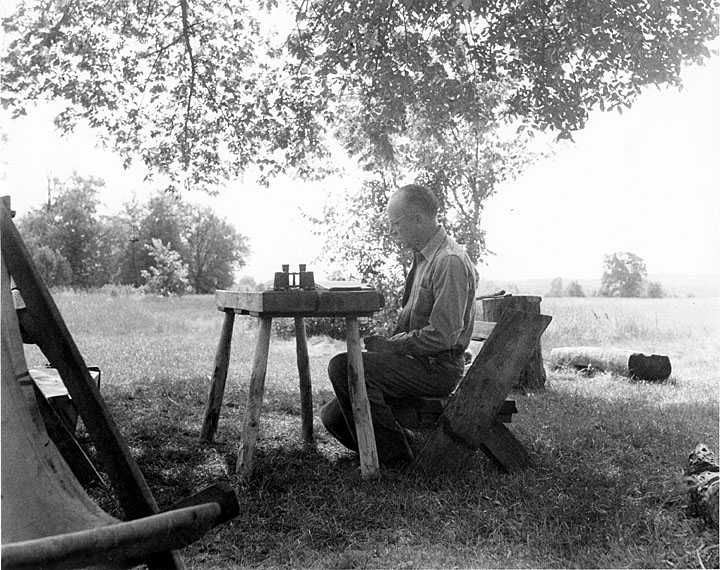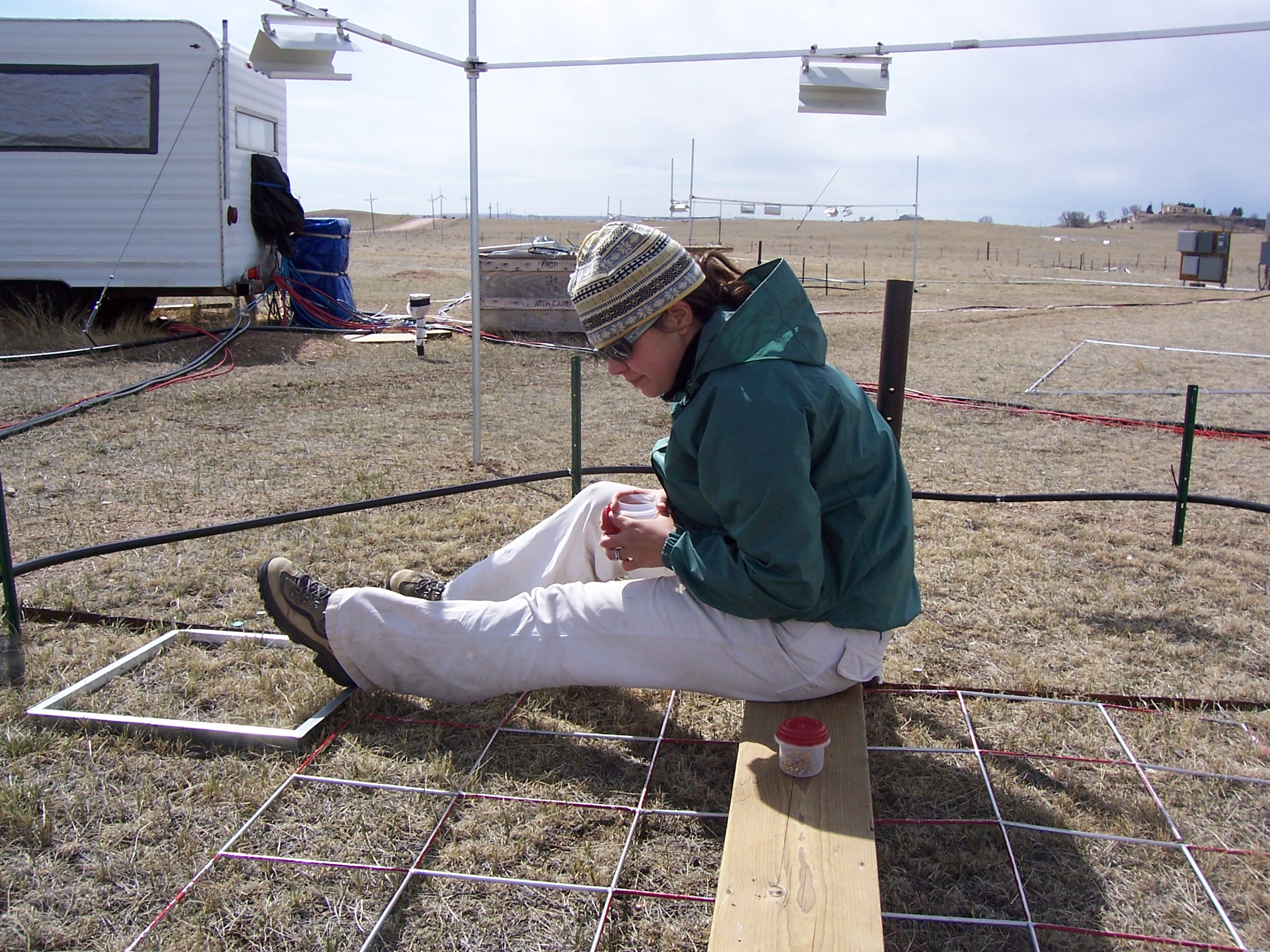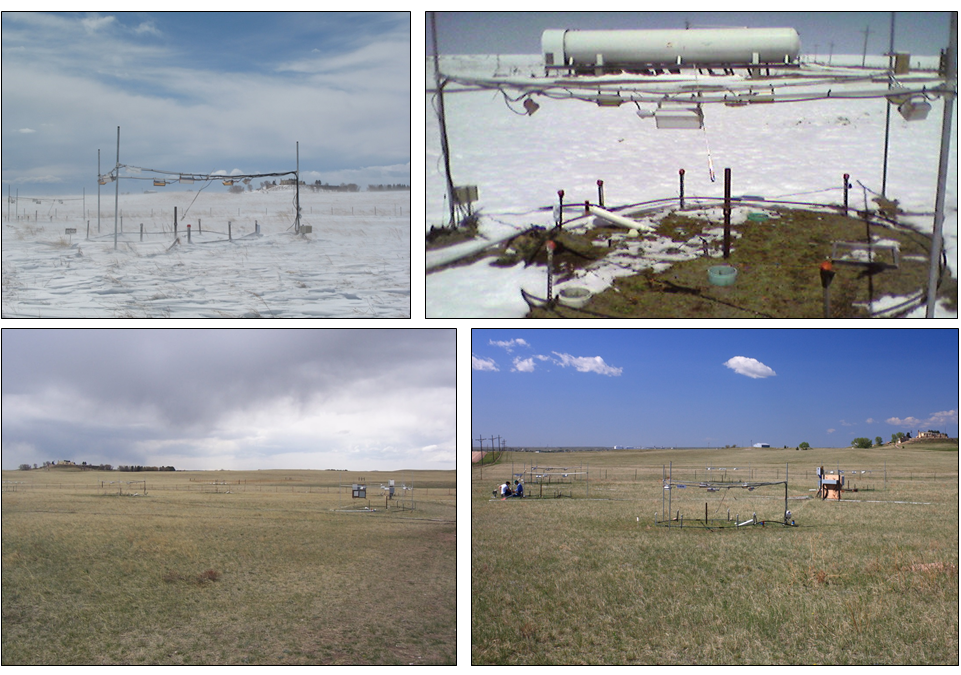
Elevated CO2 and warming stretch prairie growing season on both ends
by Julie Kray

Phenology, the timing of biological events, has captured our attention for as long as humans have observed the natural world. Anticipating seasonal changes in plant and animal life cycles and understanding their relationships with weather and climate is advantageous for hunting, planting, and harvesting. The simple pleasure of noting the annual comings and goings of birds or when plants are flowering has inspired many dedicated phenologists. Thomas Jefferson kept detailed records of weather and phenology at Monticello, Virginia. Henry David Thoreau chronicled flowering times for more than 300 plant species, from fruit trees to orchids, in the woods around Walden Pond at Concord, Massachusetts. On annual family visits to “The Shack” on the Wisconsin River, Aldo Leopold followed the seasons through animal tracks in the snow, the earliest plants in bloom, and the arrivals and departures of waterfowl and songbirds.
Field notebooks kept by these and other phenologists from the past two centuries tell us a great deal about today’s climate, and related shifts in the timing of seasons. Many phenological changes are cued by temperature, as a signal of good conditions for growth or reproduction. Consequently, as global temperatures have risen, spring now begins days to weeks earlier than it did in the past century, from temperate regions to poles1, 2, 3, 4. The effect of warming on phenology is well documented, but far less is known about how other global changes may influence plant and animal development schedules.

To test how elevated CO2 and warmer temperatures could affect phenology in mixed-grass prairie, the largest remaining grassland ecosystem in North America, researchers tracked plants at the Prairie Heating and CO2 Enrichment (PHACE) experiment near Cheyenne, WY. The study was co-led by Melissa Reyes-Fox (USDA-ARS) and Heidi Steltzer (NREL, Ft. Lewis College), with help from Jack Morgan, Dan LeCain, and technicians Anna Hansen and Megan Nix (USDA-ARS), among others. Like Thoreau and Leopold before them, these intrepid scientists braced themselves against the weather (which, in Wyoming, can be particularly cold and windy in the spring and fall) to follow leaf emergence, flower production, seed maturation, and canopy senescence for 6 common species. They spent countless hours lying prostrate on wooden platforms, staring at the tiny plants below.

Five years of meticulous weekly observations at PHACE showed that under warmer temperatures spring growth started 5 days earlier, and from start to finish, the growing season was 6 days longer. However, when plants were exposed to warmer temperatures and elevated CO2 together, they grew 8 days later into the fall, and the growing season was 14 days longer5. In this water-limited grassland, the difference appears to be that elevated CO2 allows plants to partially close leaf stomatal pores, reducing water lost through transpiration and leaving more water in the soil. Because water stress often curtails the mixed-grass prairie growing season, elevated CO2 kept plants from running out of water as quickly, delaying the timing of fall senescence.
These changes in the prairie calendar could have both positive and negative effects. A longer growing season could mean a longer grazing season. However, if pollinators do not change their timing to match earlier or later flowering, plant reproduction could suffer. Also, if the climate becomes much warmer or drier, water savings under elevated CO2 may no longer compensate for water loss, potentially limiting growing season length and reducing plant production.
The take-home message is that we should expect longer growing seasons, not just because of warmer temperatures, but also, especially in drier places, because of elevated CO2.

The results from this study were also covered by The New York Times and Nature News.
If you are a phenologist, and would like your records to be a part of a larger collection that could benefit science, consider submitting them to Project BudBurst (part of the National Ecological Observatory Network; check out their great introduction to phenology here) or one of numerous other phenology projects, searchable at the USA National Phenology Network.
References:
1 Parmesan, C. Yohe G. 2003 A globally coherent fingerprint of climate change impacts across natural systems. Nature 421(6918): 37–42. doi: 10.1038/nature01286
2 Ellwood E., Temple S., Primack R., Bradley N. & Davis C. 2013. Record-Breaking Early Flowering in the Eastern United States. PLoS ONE 8(1): e53788. doi:10.1371/journal.pone.0053788
3 Hollister, R., Webber, P. & Bay, C. 2005. Plant response to temperature in Northern Alaska: Implications for predicting vegetation change. Ecology 86:1562–1570. http://dx.doi.org/10.1890/04-0520
4 CaraDonna, P., Iler, A. & Inouye, D. 2014. Shifts in flowering phenology reshape a subalpine plant community. Proc. Natl. Acad. Sci. 111(13): 4916-4921. doi: 10.1073/pnas.1323073111
5 Reyes-Fox, M., Steltzer, H. Trlica, M., McMaster, G. Andales, A., LeCain, D. & Morgan, J. 2014. Elevated CO2 further lengthens growing season under warming conditions. Nature 510: 259-262. doi:10.1038/nature13207